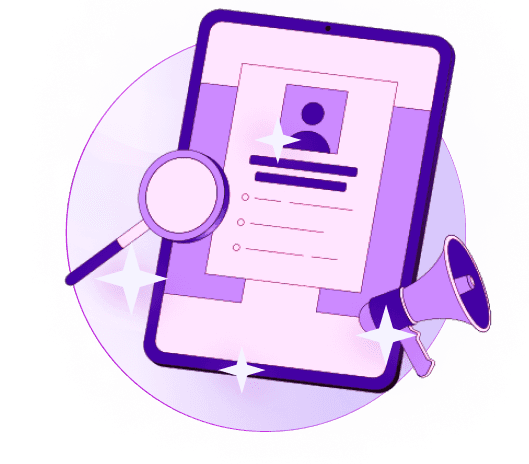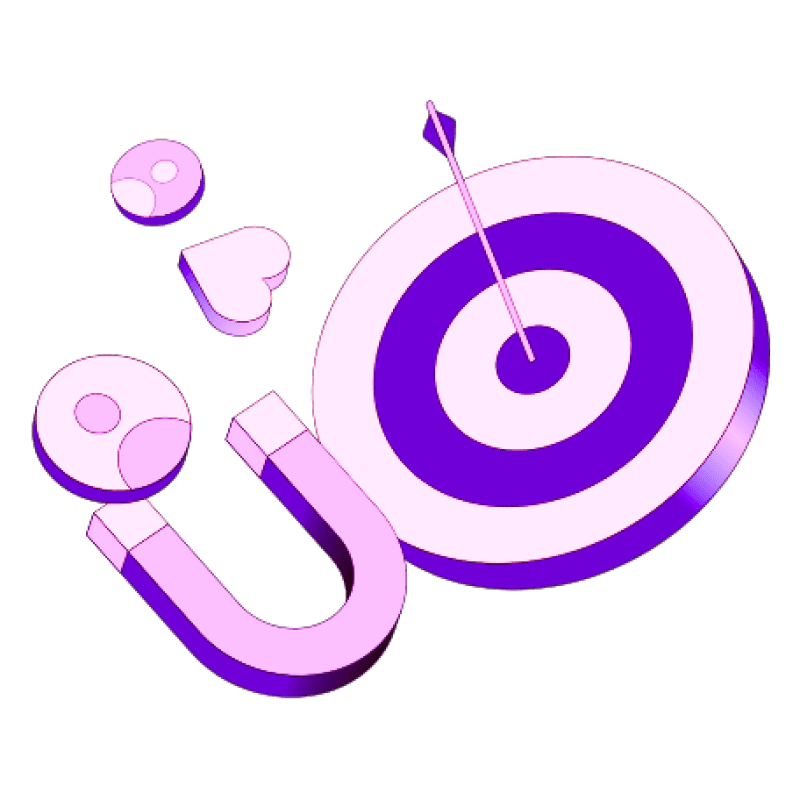Blogs
Articles

Benefits of Waterfall Enrichment: 4 Ways to Maximize Data Accuracy
Are you wondering if Waterfall Enrichment benefits could fix your ongoing data quality problems? Most sales teams struggle daily with outdated contacts and incomplete prospect information.
Waterfall enrichment works like a chain reaction. It runs your simple prospect data through multiple data sources one after another to verify accuracy and completeness. This sales waterfall strategy helps you find more email addresses by using multiple databases instead of a single source. Clean and accurate data plays a vital role in targeted outreach and informed decision-making.
Our experience shows how waterfall enrichment creates better contact lists, enhances sales outreach, and drives lead generation. The process delivers four key benefits: it reduces data decay, cuts spending on multiple vendors, boosts match rates, and ensures detailed data completeness. So your team can focus on selling instead of dealing with unreliable data.
What are the 4 benefits of waterfall enrichment ?
You can't overstate how sequential data enrichment helps build solid sales pipelines. My years of helping sales teams optimize their data strategies have shown that waterfall enrichment gives consistent advantages that single-source enrichment can't match.
Waterfall enrichment passes your contact data through multiple verification sources in a strategic sequence. One provider might not verify certain fields, but the next one in the chain gets a chance. This creates a complete approach to data management that fixes multiple problems at once.
Here are four major benefits that make waterfall enrichment worth your time:
Improved Data Accuracy and Match Rates
Data accuracy makes or breaks your outreach efforts in today's evidence-based sales environment. Your performance slowly deteriorates due to data quality issues. Each bounced email and wrong number represents missed opportunities and wasted resources. Let's get into how waterfall enrichment changes your match rates and overall data accuracy.
Improved data accuracy and match rates explained
Waterfall enrichment improves data accuracy by checking multiple providers in sequence until it finds the required information. The system queries the first provider to find missing contact details like emails, phone numbers, or job titles. The process automatically moves to the next provider if unsuccessful. This continues until it gets the information or runs through all available sources.
This sequential approach gives better results than traditional single-source enrichment. Industry standards show:
Standard enrichment with a single provider typically achieves only 50-60% match rates
Waterfall enrichment boosts these rates to 80% or higher
Some implementations report match rates reaching up to 93%
Using a combination of providers can yield completion rates of 94% without manual input
Different data providers have varying strengths and coverage areas. This makes the methodology work effectively. To cite an instance, a recent enrichment test showed:

Why improved data accuracy and match rates matter?
The business effects run deeper than surface statistics. Poor data quality directly hurts your sales effectiveness and revenue generation. Research shows:
Bad data quality wastes approximately 21% of sales representatives' time – equivalent to one full day each week
Companies with properly enriched CRM data generate 44% more Sales Qualified Leads than those without enriched data
Waterfall enrichment can deliver up to 45% more revenue without changing products, pricing, or conversion rates
Your sales pipeline suffers from a chain of negative effects due to inaccurate data. Sales teams stop trusting the system when they repeatedly encounter unreliable data. This leads to decreased CRM adoption and inconsistent sales processes.
In stark comparison to this, accurate data enables several key sales functions:
Precision targeting – Reaching the right decision-makers with correct contact information
Effective personalization – Tailoring messages based on accurate job titles and company details
Improved lead scoring – Properly qualifying prospects with complete information
Enhanced conversion rates – Creating more tailored emails and messages that perform better
How to implement improved data accuracy and match rates?
You need a strategic approach beyond just subscribing to multiple data services to implement waterfall enrichment successfully. Here's a practical framework to maximize your data accuracy and match rates:
1. Audit your current data quality
You should establish baseline metrics to measure improvement before implementation:
Current match rates across different data fields
Percentage of bounced emails and failed calls
Time spent by sales teams manually researching contacts
Lead conversion rates with existing data quality
These measurements help you measure improvements and calculate ROI after implementation.
2. Select complementary data providers
Providers excel in different areas. A more effective waterfall comes from selecting vendors with different strengths:
Some providers excel at finding emails but don't deal very well with direct phone numbers
Others might have stronger coverage in specific industries or regions
Proprietary data sources (like Cognism) may offer unique verification capabilities
You should assess potential providers based on:
Match rates for your specific target audience
Data verification methods and accuracy claims
Geographic and industry coverage
Cost structure and payment models
Integration capabilities with your existing systems
3. Establish a logical sequence
The order of your waterfall affects results substantially. Strategic provider arrangement should:
Start with your most reliable or cost-effective provider
Position industry-specific providers where they'll work best
Place providers with pay-for-success models earlier in the sequence
4. Implement real-time verification
Systems should verify new data as it enters your CRM, beyond enriching existing records:
Schedule enrichment jobs to keep specific data cohorts fresh
Set up enrichment job criteria that improve record accuracy immediately
Add real-time email verification to catch invalid addresses before system entry
5. Monitor and optimize performance
Key metrics need continuous tracking to refine your enrichment process:
Match rates across different data fields
Provider performance and contribution to overall match rates
Cost per successfully enriched record
Impact on sales metrics (email deliverability, connect rates, conversion rates)
These insights help you adjust your provider sequence or replace underperforming sources.
6. Combine with machine learning to improve accuracy
Advanced waterfall enrichment systems utilize machine learning:
Algorithms can refine data quality and filter out inaccuracies
Proprietary scoring algorithms determine the most accurate data for each company or contact
Automated verification processes can check millions of data points daily
Your sales team can focus more on engaging prospects and less on hunting for contact information by implementing these strategies. This directly affects your bottom line.
People switch jobs, phone numbers change, and companies get acquired regularly. Your data quality needs ongoing maintenance through waterfall enrichment rather than a one-time effort.
Reduced Data Decay and Cleaner CRM
Data decay happens fast - over 30% of B2B contact data goes stale every year. Sales teams face a huge challenge keeping their outreach campaigns working when data deteriorates this quickly. Waterfall enrichment gives us a great way to fix this ongoing problem by creating cleaner databases that boost business results.
Reduced data decay and cleaner CRM explained
Contact information naturally gets worse over time. People switch jobs, companies get bought out or shut down, emails stop working, and phone numbers become useless. Your CRM system loses value steadily as this decay happens, whether you use the data or not.
Waterfall enrichment helps curb this deterioration with a structured way to keep data fresh. Unlike getting data from just one source, waterfall enrichment:
Gets lead data from multiple sources one after another
Fills empty spots in your CRM step by step
Brings old contacts up to date
Swaps dead emails with working ones
Keeps job roles and company details fresh
This isn't just a quick fix - it's more like having a maintenance crew that never stops working. Your data goes through several checkpoints that catch and fix different types of decay. Even if some data providers fall short, your database stays reliable thanks to these multiple checks.
The name "waterfall" fits perfectly - data flows down through different sources, getting more accurate and complete at each step. This layered system keeps data much fresher than old-school methods.
Why reduced data decay and cleaner CRM matter
Bad data costs businesses dearly. Companies lose about 21% of sales representatives' time due to poor data quality - that's a full day every week. This massive productivity drain directly cuts into revenue.
Clean CRM data helps several parts of your business:
Sales efficiency: Teams can focus on selling instead of hunting down contact details
Marketing effectiveness: Emails reach more people when addresses actually work
Pipeline accuracy: You can trust your forecasts when they use current data
Operational consistency: Clean data means fewer sync problems between systems
Companies that keep their CRM data enriched get 44% more Sales Qualified Leads than those who don't. Better targeting, higher connection rates, and personalized outreach all add up to make this big difference.
Without doubt, letting data decay creates lots of problems:
Few people reply because messages don't fit or reach them
Ad money gets wasted on leads you can't reach
Sales and marketing teams work against each other
Leads go to the wrong places and break service agreements
Let's look at how traditional and waterfall enrichment handle data decay differently:

Fast-paced sales teams see the biggest difference - reaching the right person quickly can make or break a deal.
How to implement reduced data decay and cleaner CRM?
You need a clear plan to stop data decay. Here's how to set up waterfall enrichment for a clean CRM:
1. Set regular enrichment schedules
Pick update times that match how fast your industry changes:
Monthly for fast-moving sectors (tech, SaaS)
Every three months for stable industries
Special updates after big events (funding rounds, mergers)
Your schedule - whether it's monthly, weekly, or quarterly - directly changes how well emails deliver and how often you connect. Industries where people change jobs often need more frequent updates.
2. Focus on your most important data
Not all data needs the same attention. Use a three-level system:
Level 1: High-value accounts and active deals (update most often)
Level 2: Target accounts and marketing-qualified leads
Level 3: Old data and inactive accounts (update less often)
This focused approach saves time and money since your team won't waste effort on low-priority records or dead ends.
3. Map out all your fields
Pick which fields need regular checks and updates:
Basic contact info (email, phone)
Job title and department
Company details (size, industry, funding)
Social profiles and where they engage
Today's waterfall enrichment tools let you pick exactly which fields to refresh, so you control what gets updated.
4. Make data rules standard
Keep your CRM data format consistent:
Use the same phone number format
Write company names and industries the same way
Keep job titles consistent
Handle international contacts uniformly
These standards help waterfall enrichment keep data clean across all your sales and marketing tools.
5. Set up automatic checks
Create systems that spot and fix data problems:
Check if emails work
Watch for job changes on LinkedIn and other platforms
Monitor company status (buyouts, closures)
Find and merge duplicate entries
These systems tell you when contacts switch companies or roles, so you can update your records.
6. Track how well your data works
Start measuring and watch for improvements:
Lower bounce rates
More complete contact data
Time saved on research
Better connection rates
More responses to campaigns
These measurements show if your waterfall enrichment pays off and help you make evidence-based improvements.
Many companies don't check how well their data decay prevention works. Regular checks help you get the most from your waterfall enrichment investment.
These strategies create what I call a "self-healing" CRM - it finds and fixes data problems before they hurt your sales and marketing. This active approach turns your CRM from a static list into a dynamic tool that helps your business grow.
Cost-Effective Enrichment with Pay-for-Success Model
Traditional data enrichment can drain your budget with upfront costs for bulk records. The quality doesn't matter - you pay anyway. Waterfall enrichment offers a smarter financial model that protects your investment and gives better results.
Economical solutions explained
Waterfall enrichment runs on a pay-for-success model. You pay vendors only when they successfully enrich a specific data field. The search costs nothing if they don't find useful information. This simple yet powerful approach changes how data enrichment economics work.
The model follows a sequence through multiple providers:
The system asks the first provider when a field needs enrichment
You pay only that provider if they succeed
The system moves to the next provider if unsuccessful
This continues until the field gets enriched or all providers are tried
This step-by-step approach prevents double charges and maximizes successful enrichment chances. Your budget goes further because you only pay for actual results instead of potential data.
Some waterfall enrichment platforms take this idea further. To name just one example, see services like Datablist that use success-based pricing. They charge only for contact information they find and verify. Other platforms offer tiered approaches with clear usage-based pricing starting at USD 39.00 monthly.
The importance of economical enrichment
Traditional data enrichment requires big upfront investments no matter what happens. You might pay for:
Bulk access to entire databases
Minimum subscriptions across multiple providers
Fixed fees regardless of match quality or relevance
This means paying for thousands of unused or outdated records. Your ROI suffers from this budget inefficiency.
The pay-for-success model creates a direct link between costs and value. Here's what you get:
Less wasted money – You won't pay for useless or wrong data
Protected budget – Your money goes only toward valuable, actionable data
Performance insights – You'll see which vendors give the best return over time
Better resources – Teams spend less time handling multiple expensive subscriptions
Using waterfall enrichment with pay-for-success often costs less per contact than managing multiple subscriptions manually. This helps especially when working with premium providers of specific data, which can get pricey quickly.
The benefits grow with scale. Sending large volumes through a waterfall system gives you better negotiating power for rates, and these savings go straight to you. Your cost advantages multiply as data needs increase.
Setting up economical enrichment
A cost-effective waterfall enrichment system needs smart planning. Here's how to get the most value while spending less:
1. Get your provider sequence right
Put your data providers in a smart order:
Start with the most economical providers
Next, add providers with high success rates in your industry
Save premium, specialized providers for last tries
This order helps solve most enrichment needs cheaply while using premium services only when needed.
2. Pick the right pricing model
Enrichment services come with different pricing options:
Pure pay-for-success (pay only for successful enrichments)
Usage-based pricing (pay for request volume)
Hybrid models (small base fee plus success charges)
Find the model that fits your enrichment needs and budget. Pure pay-for-success usually offers the lowest risk and highest value.
3. Use selective enrichment
Each record needs different enrichment levels. Try this tiered approach:

This focused strategy puts your money where it matters most.
4. Utilize enrichment customization
Many platforms let you customize your approach:
Pick specific fields to enrich
Set data acceptance thresholds
Schedule enrichment times
These options ensure you pay only for data your business needs.
5. Keep track and adjust
Watch these key metrics to optimize your spending:
Cost per enriched record
Provider success rates
Value gained (better connection rates, conversions)
ROI versus old methods
Review these numbers regularly and adjust your provider sequence or strategy as needed.
These strategies will help you build a waterfall enrichment system that delivers quality data without waste. This balanced method gives you better data and protected budgets—something traditional enrichment can't match.
Expanded Global and Industry-Specific Coverage
Single-source data enrichment suffers from geographic limitations. Most vendors shine in specific regions or industries but struggle elsewhere. These gaps create blind spots that can significantly reduce your sales potential.
Expanded global and industry-specific coverage explained
Waterfall enrichment solves these limitations by combining multiple data sources with complementary strengths. Different vendors specialize in specific regions—some excel in North America, others in Europe or Asia. The same pattern emerges in industry coverage. Some providers deliver better results with technology companies while others have stronger data on manufacturing or healthcare sectors.
Waterfall systems make use of each provider's strengths and minimize their weaknesses through a sequential enrichment chain. Your data flows through multiple vendors until it finds the most accurate information, whatever the geography or industry. This method will give a complete coverage in markets and business types of all sizes.

Why expanded global and industry-specific coverage matters?
Complete coverage brings real benefits to expanding businesses. Your organization can pursue opportunities in unfamiliar territories confidently without compromising data quality. This eliminates geographical blind spots when entering new markets.
The system helps you find new prospects that single vendors might overlook. This broader perspective enables better segmentation and targeting in sectors of all types.
Industry-specialized enrichment gives deeper understanding of sector-specific factors. Healthcare companies can access clinical data while B2B organizations receive relevant firmographic information through this tailored approach.
How to implement expanded global and industry-specific coverage?
The first step requires identifying providers with complementary geographic strengths. You should think over including region-specific vendors like Apollo (strong in US), ContactOut (UK), and Datagma (France).
The next step involves arranging providers in a logical sequence based on your target markets. Providers with strongest coverage in your primary regions should appear earlier in the waterfall.
Your strategy should combine geographic considerations with industry-specialized data sources that match your target sectors. This approach ensures both regional and vertical coverage.
The final step involves regular reviews of provider performance in different regions and industries. You can adjust your waterfall configuration based on these results.
Conclusion
Waterfall enrichment changes how sales teams manage their prospect data. This piece explores four most important advantages that this sequential enrichment process offers compared to traditional single-source methods. Data accuracy improves dramatically, pushing match rates from the usual 50-60% to an impressive 80-90% or higher. Your CRM maintains its freshness longer and fights against the 30% annual data decay rate that affects sales databases. It also protects your budget with a pay-for-success model where you only pay for successfully enriched records. Multiple complementary data sources overcome geographical and industry limitations that single providers don't deal very well with.
Sales teams spend less time researching contacts and more time engaging prospects because of these combined benefits. Companies using waterfall enrichment report up to 44% more Sales Qualified Leads and achieve 45% higher revenue without changing their core sales strategies.
Data enrichment process changes worry many organizations due to complexity or cost concerns. The implementation process remains straightforward. A system that maintains itself while delivering superior results comes from choosing the right providers, sequencing logically, and monitoring performance regularly.
You can find detailed waterfall enrichment solutions at Persana.ai to boost your data accuracy without overwhelming your team.
Adaptability makes waterfall enrichment truly powerful. This approach grows naturally with your business, works in a variety of industries, and adjusts to market changes. Companies of all sizes achieve cleaner data, higher productivity, and ended up with stronger sales performance. Waterfall enrichment does more than fix data problems – it gives sales teams complete confidence in their outreach information and revolutionizes their operations.
Key Takeaways
Waterfall enrichment transforms data quality by sequentially processing contacts through multiple providers, delivering superior results compared to single-source methods. Here are the essential insights for maximizing your data accuracy:
• Dramatically boost match rates from 50-60% to 80-90% by leveraging multiple data sources sequentially instead of relying on a single provider
• Reduce data decay impact and maintain cleaner CRMs through continuous refresh cycles that combat the 30% annual data deterioration rate
• Optimize costs with pay-for-success models that charge only for successfully enriched records, eliminating wasted spend on unusable data
• Expand global coverage by combining provider strengths across different regions and industries, overcoming geographical and sector-specific limitations
• Generate 44% more Sales Qualified Leads while saving 21% of sales representatives' time currently lost to poor data quality issues

Create Your Free Persana Account Today
Join 5000+ GTM leaders who are using Persana for their outbound needs.
How Persana increases your sales results
One of the most effective ways to ensure sales cycle consistency is by using AI-driven automation. A solution like Persana, and its AI SDR - Nia, helps you streamline significant parts of your sales process, including prospecting, outreach personalization, and follow-up.



